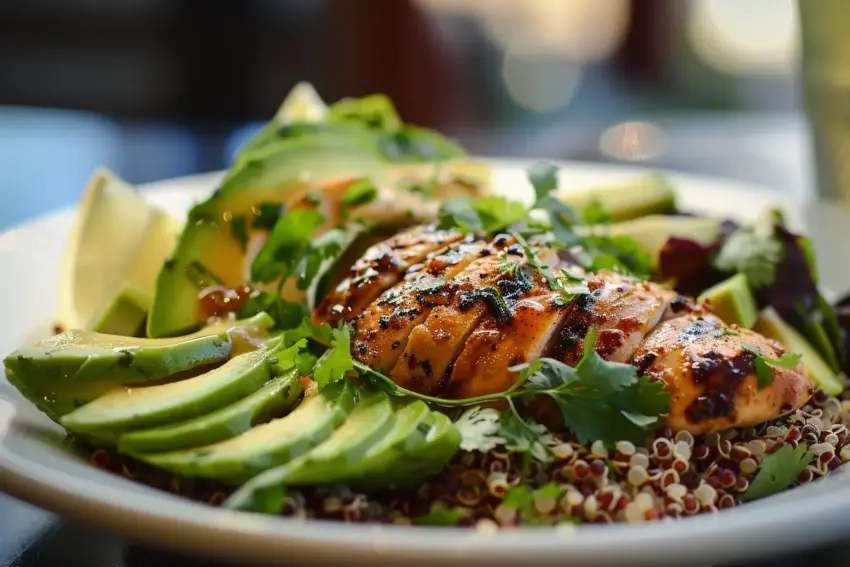What is Clean Eating?
Clean eating is a lifestyle approach to nutrition that emphasizes consuming whole, natural foods in unprocessed or minimally processed forms. For those wondering how to eat clean for beginners, the concept revolves around choosing foods as close to their natural state as possible and avoiding artificial additives, refined sugars, and unhealthy fats.
The aim is to fuel the body with nutrients that support optimal health, energy levels, and overall well-being.
At its core, clean eating encourages the consumption of foods from all major food groups:
- Fruits and Vegetables: These provide essential vitamins, minerals, and antioxidants. Opt for fresh, seasonal, and organic produce whenever possible.
- Whole Grains: Choose whole grain options, such as brown rice, quinoa, and oats, which are rich in fiber and nutrients, rather than refined grains like white rice and white bread.
- Lean Proteins: Include sources like chicken, turkey, fish, legumes, and tofu. These proteins support muscle growth, repair, and overall bodily functions.
- Healthy Fats: Incorporate sources like nuts, seeds, avocados, and olive oil. These fats support heart health, brain function, and hormone balance.
- Dairy or Dairy Alternatives: To avoid excessive saturated fats, choose low-fat or fat-free dairy products or plant-based alternatives like almond milk or soy milk.
Clean eating promotes mindful eating habits, including paying attention to hunger cues, eating slowly, and savoring each bite. This approach helps to foster a positive relationship with food and encourages balanced, sustainable choices. By making clean eating a lifestyle choice, individuals can reap long-term health benefits while enjoying a varied and satisfying diet.

Benefits of Clean Eating
Clean eating provides many benefits for both physical and mental health, making it a valuable lifestyle choice. For those exploring how to eat clean for beginners, here are key advantages to consider:
- Improved Nutrient Intake: Clean eating emphasizes consuming whole, unprocessed foods, which are packed with essential vitamins, minerals, and nutrients. This helps the body function optimally, supporting energy levels, immune function, and overall health.
- Weight Management: Clean eating can naturally contribute to weight loss or maintenance by avoiding refined sugars, unhealthy fats, and processed foods. Whole foods tend to be more satiating, reducing the likelihood of overeating and helping to manage calorie intake.
- Enhanced Energy Levels: Foods like whole grains, lean proteins, and healthy fats provide sustained energy release, helping to prevent energy crashes. This stable energy flow can lead to increased productivity and better performance in daily activities.
- Disease Prevention: Clean eating reduces the intake of foods associated with chronic conditions such as heart disease, type 2 diabetes, and certain cancers. Emphasizing nutrient-dense foods can also bolster the body’s defense against disease through improved immune function.
- Better Digestion: Whole foods contain more dietary fiber, essential for maintaining a healthy digestive system. Fiber aids in preventing constipation, promoting regular bowel movements, and supporting gut health.
- Mental Health Benefits: The nutrients found in clean foods can support brain health and function. Omega-3 fatty acids from sources like fish and nuts are linked to improved mood and reduced risk of depression. Clean eating promotes balanced blood sugar levels, preventing mood swings and irritability.
- Enhanced Skin Health: Clean eating can lead to more precise, healthier skin. The antioxidants and vitamins in fruits and vegetables help fight oxidative stress and inflammation, contributing to a more youthful appearance.
- Longevity: By supporting overall health and reducing the risk of chronic disease, clean eating can contribute to a longer, healthier life. The focus on balanced, nutrient-rich foods lays a foundation for a sustainable, beneficial lifestyle that can continue to pay dividends over time.
Clean eating offers a holistic approach to wellness, impacting physical health, mental well-being, and longevity. By making clean eating a part of one’s daily routine, individuals can enjoy various benefits, fostering a healthier, happier life.
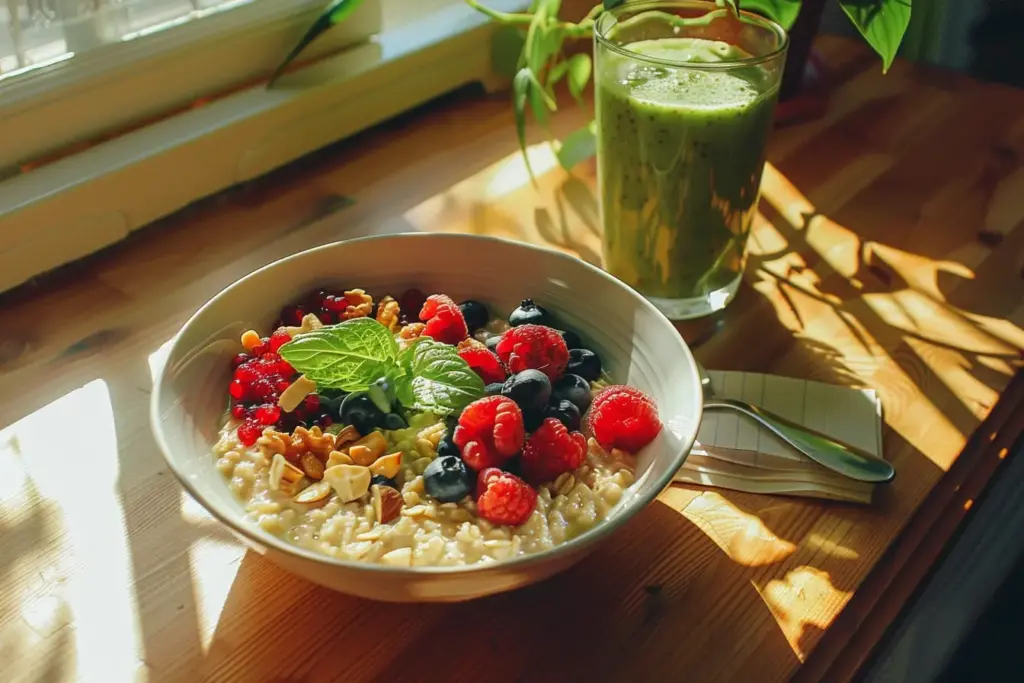
Why Healthy Eating Habits Are Important
Healthy eating habits are crucial to overall well-being, offering numerous benefits to physical and mental health. Here’s why embracing these habits is essential:
- Disease Prevention: A balanced diet emphasizing whole foods and nutrient-rich options helps reduce the risk of chronic conditions such as heart disease, type 2 diabetes, and certain cancers. Consuming foods low in refined sugars, unhealthy fats, and sodium can support cardiovascular health and mitigate disease risk.
- Weight Management: Developing healthy eating habits can contribute to maintaining a healthy weight. Whole foods are often more satiating, reducing the temptation to overeat. A balanced diet with lean proteins, complex carbohydrates, and healthy fats can help stabilize blood sugar levels, preventing cravings and binge eating.
- Improved Energy Levels: A diet rich in whole grains, lean proteins, and healthy fats provides sustained daily energy. This steady energy flow helps prevent crashes, allowing for better performance in daily activities and exercise.
- Mental Health Benefits: Nutrition plays a significant role in mental health. A diet that includes omega-3 fatty acids from sources like fish, nuts, and seeds has been linked to improved mood and reduced risk of depression. Additionally, balanced blood sugar levels from healthy eating habits can help prevent mood swings and irritability.
- Better Digestion: Healthy eating habits emphasize foods high in dietary fiber, such as fruits, vegetables, and whole grains. This fiber aids digestion, preventing constipation and promoting regular bowel movements, contributing to overall gut health.
- Longevity: Healthy eating habits can contribute to a longer, healthier life by reducing the risk of chronic disease and supporting overall well-being. A balanced diet that includes a variety of nutrient-dense foods helps sustain bodily functions and provides a foundation for long-term health.
- Quality of Life: Healthy eating habits can improve daily life by enhancing vitality and mood, supporting regular sleep patterns, and reducing stress levels. This contributes to a more balanced, fulfilling lifestyle.
- Positive Relationship with Food: Healthy eating habits foster mindful eating practices, encouraging individuals to savor each bite and listen to their body’s hunger cues. This leads to a healthier relationship with food, reducing the likelihood of emotional eating and promoting balanced choices.
Healthy eating habits provide a foundation for overall health and wellness. By incorporating nutrient-dense foods into daily routines, individuals can enjoy benefits ranging from disease prevention to improved energy and longevity, ultimately enhancing quality of life.
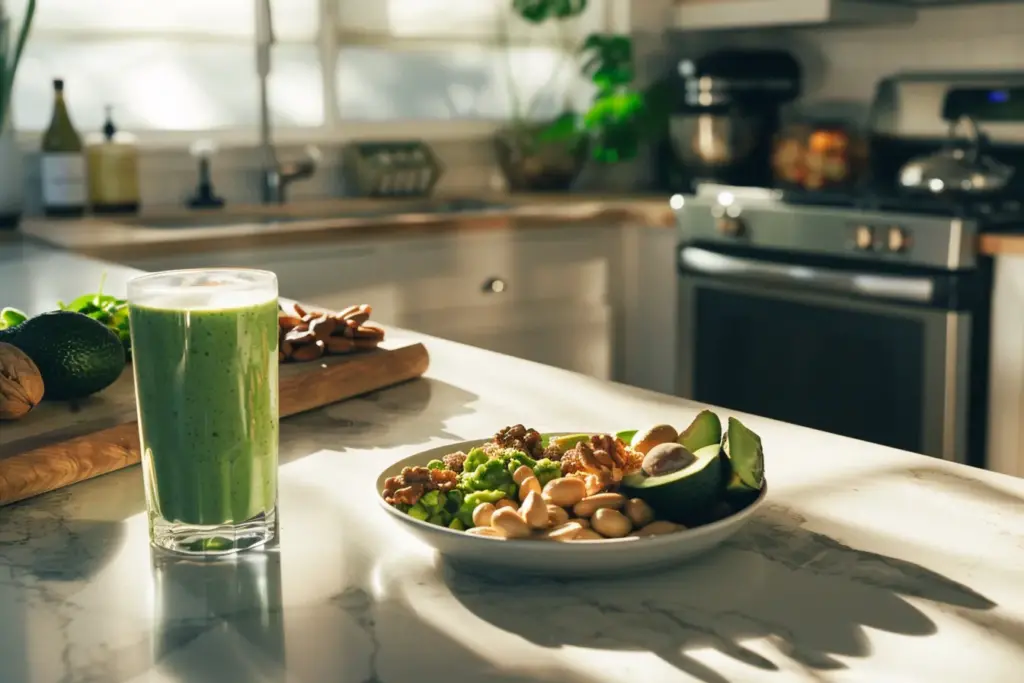
Building Your Clean Eating Pantry
Creating a clean-eating pantry is an essential step in adopting a clean-eating lifestyle. Stocking your kitchen with healthy, whole foods simplifies meal preparation and encourages balanced choices. Here are vital categories to include in a clean-eating pantry:
- Whole Grains: Replace refined grains with whole grain options such as brown rice, quinoa, oats, and whole wheat pasta. These are rich in fiber, vitamins, and minerals, providing sustained energy and nutritional value.
- Legumes: Beans, lentils, and chickpeas are versatile sources of protein and fiber. They can be used in salads, soups, and stews, offering a plant-based protein option for vegetarians and meat-eaters.
- Healthy Fats: Keep a variety of healthy fats on hand, including olive oil, coconut oil, nuts, and seeds. These provide essential fatty acids, support heart health, and add flavor and texture to meals.
- Herbs and Spices: Stocking a variety of herbs and spices such as basil, oregano, turmeric, and cumin can elevate the flavor of dishes without adding excessive salt or sugar. These seasonings also offer unique health benefits, such as anti-inflammatory and antioxidant properties.
- Nuts and Nut Butter: Almonds, walnuts, and cashews make excellent snacks and can be added to meals for extra protein and healthy fats. Nut butter, such as almond or peanut butter, is fantastic for spreading on whole-grain toast or adding to smoothies.
- Canned Goods: Canned tomatoes, tuna, and salmon are convenient pantry staples used in various clean-eating recipes. When choosing canned goods, opt for options without added sugars, sodium, or artificial preservatives.
- Condiments: Stock condiments that are free of artificial additives and sugars. Apple cider vinegar, balsamic vinegar, and mustard are good options, as well as tahini and low-sodium soy sauce or tamari.
- Dried Fruits: Keep dried fruits such as raisins, cranberries, and apricots on hand for snacking or adding oatmeal, salads, and baked goods. For a clean option, ensure they are free of added sugars and preservatives.
A well-stocked pantry provides a foundation for clean eating, simplifying meal preparation and encouraging healthier choices. By focusing on whole, nutrient-dense foods and avoiding artificial additives, you can build a pantry that supports a clean eating lifestyle and sets the stage for balanced, satisfying meals.
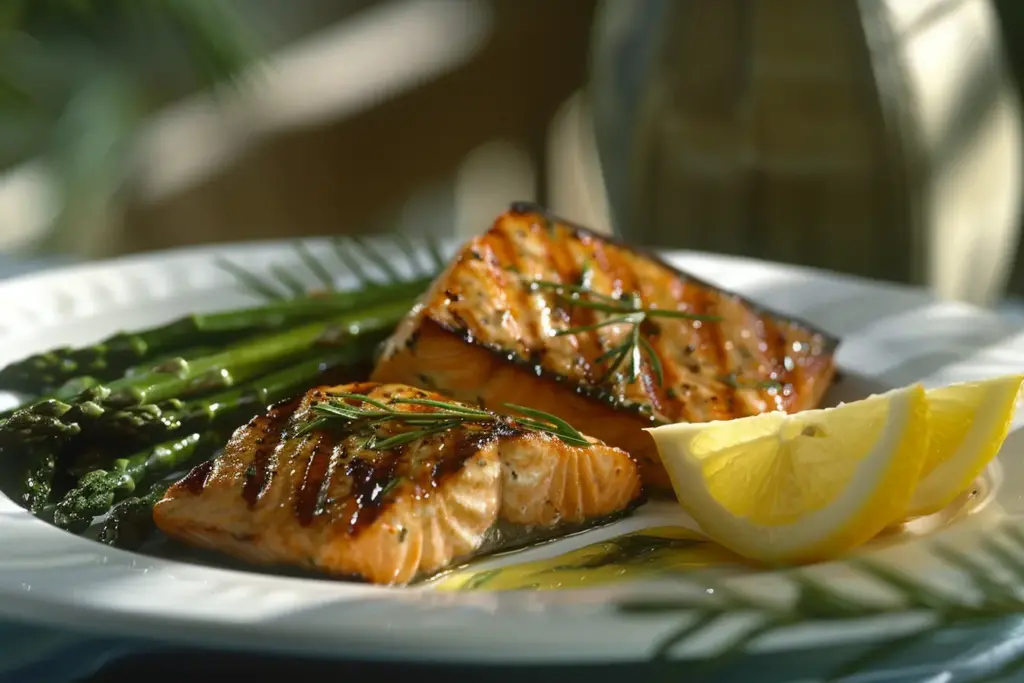
Simple, Clean Eating Recipes for Beginners
Starting clean eating can be easy and enjoyable with various simple, delicious recipes. For those learning how to eat clean for beginners, here are a few beginner-friendly options to help you kick-start your clean eating journey:
- Quinoa Salad:
- Ingredients: 1 cup cooked quinoa, 1 cup cherry tomatoes (halved), 1 cucumber (diced), 1/4 cup red onion (chopped), 1/4 cup feta cheese (crumbled), 2 tablespoons olive oil, 1 tablespoon lemon juice, salt, and pepper to taste.
- Instructions: In a large bowl, combine the quinoa, cherry tomatoes, cucumber, red onion, and feta cheese. Drizzle with olive oil and lemon juice—season with salt and pepper. Toss to combine and enjoy.
- Overnight Oats:
- Ingredients: 1/2 cup rolled oats, 1 cup almond milk, 1 tablespoon chia seeds, 1 tablespoon honey, 1/4 cup berries, 1/4 teaspoon cinnamon.
- Instructions: In a jar or bowl, combine oats, almond milk, chia seeds, honey, and cinnamon. Stir to mix thoroughly. Cover and refrigerate overnight. In the morning, top with berries and enjoy.
- Baked Salmon with Veggies:
- Ingredients: 2 salmon fillets, 1 tablespoon olive oil, 1 tablespoon lemon juice, 1 teaspoon garlic powder, 1 teaspoon dried dill, salt and pepper to taste, 1 cup broccoli florets, 1 cup carrot sticks.
- Instructions: Preheat the oven to 375°F (190°C). Place the salmon fillets on a baking sheet lined with parchment paper. Drizzle with olive oil and lemon juice—season with garlic powder, dill, salt, and pepper. Add broccoli and carrot sticks around the salmon. Bake for 15-20 minutes or until the salmon flakes easily with a fork and the veggies are tender.
- Stuffed Bell Peppers:
- Ingredients: 4 bell peppers (tops removed and seeds cleaned), 1 cup cooked brown rice, 1 cup cooked ground turkey or plant-based meat, 1/2 cup tomato sauce, 1 teaspoon dried oregano, 1 teaspoon garlic powder, salt and pepper to taste.
- Instructions: Preheat the oven to 350°F (175°C). Combine the cooked rice, turkey, tomato sauce, oregano, garlic powder, salt, and pepper in a bowl. Stuff the mixture into the bell peppers and place them in a baking dish. Cover with foil and bake for 25-30 minutes or until the peppers are tender.
- Greek Yogurt Parfait:
- Ingredients: 1 cup Greek yogurt, 1 tablespoon honey, 1/4 cup granola, 1/4 cup mixed berries.
- Instructions: In a glass or bowl, layer the yogurt, honey, granola, and berries. Repeat layers until all ingredients are used. Enjoy immediately.
These simple, nutritious recipes offer variety and ease, making clean eating approachable and delicious for beginners. By incorporating these dishes into your routine, you can build balanced meals and cultivate healthy eating habits.

Meal Planning for Clean Eating Success
Meal planning is critical to successful clean eating, helping you stay organized, save time, and maintain balanced, nutritious meals. For those discovering how to eat clean for beginners, here’s a guide to effective meal planning for clean eating success:
- Set Goals: Start by defining your clean eating goals. Whether it’s to lose weight, improve energy levels, or eat more nutritious foods, having clear objectives will guide your meal planning and food choices.
- Choose Balanced Meals: Plan meals with lean proteins, whole grains, healthy fats, and vegetables. This balance provides essential nutrients and keeps you satisfied throughout the day. For instance, a lunch option might include grilled chicken, quinoa, and a side of steamed broccoli.
- Create a Weekly Menu: Take time each week to map out a menu for breakfast, lunch, dinner, and snacks. This will help you avoid last-minute, less healthy choices and ensure you have various options to enjoy. Use seasonal ingredients and rotate recipes to prevent monotony.
- Prepare a Shopping List: Create a detailed list once your menu is set. Include all the ingredients needed for the week, focusing on whole foods such as fruits, vegetables, whole grains, and lean proteins. Shopping with a list reduces impulse purchases and ensures you have everything needed for clean eating.
- Prep in Advance: Consider preparing some ingredients or dishes ahead of time. For example, cook a batch of quinoa or grill chicken breasts for the week. Chopping vegetables or pre-washing fruits can also save time and make meal preparation more manageable.
- Portion Control: To maintain balance and prevent overeating, portion out meals and snacks in advance. Use containers to store single-serving portions of salads, soups, or snacks, making it easy to grab and go when needed.
- Include Snacks: Healthy snacking is part of a balanced diet. Plan snacks such as nuts, yogurt, or fruit to prevent hunger and support clean eating goals. Keeping these on hand helps avoid reaching for less healthy options.
- Evaluate and Adjust: At the end of each week, evaluate how the meal plan worked. Note what meals were enjoyable, what might need adjusting, and any challenges faced. This reflection helps refine future meal plans, ensuring continued success on your clean eating journey.
By incorporating meal planning into your routine, you can maintain a balanced, nutritious diet, support your clean eating goals, and make healthy eating more manageable. The structure and organization provided by meal planning contribute to overall clean eating success, fostering a sustainable lifestyle.
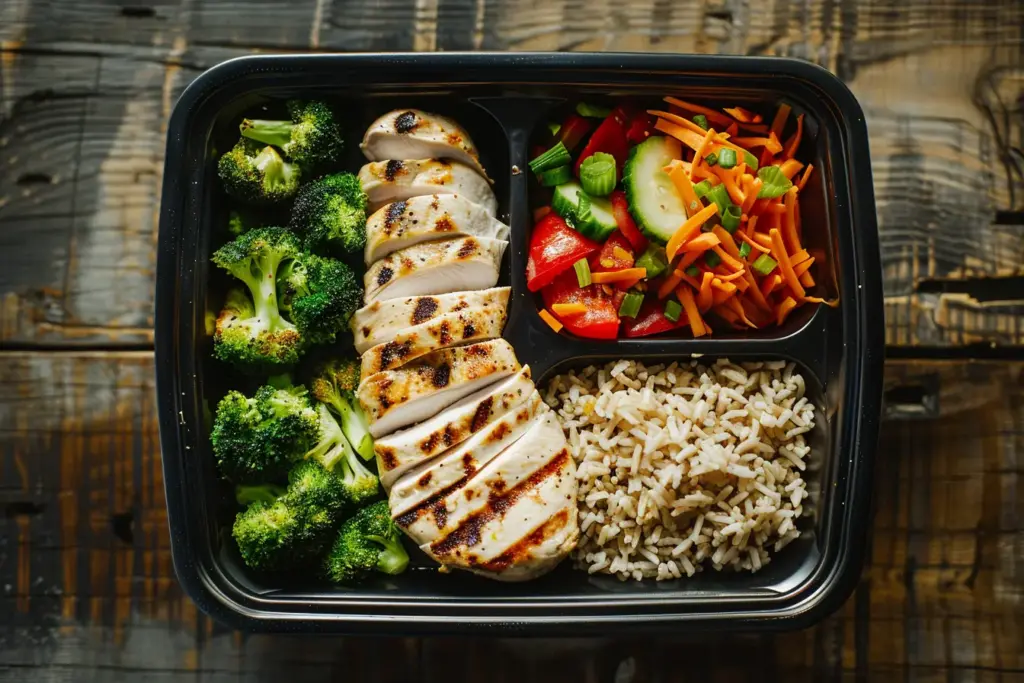
Overcoming Clean Eating Challenges
Transitioning to a clean eating lifestyle can be rewarding but often comes with challenges. Here are common obstacles and practical solutions to help you overcome them:
- Time Constraints: Busy schedules can make meal preparation challenging. Overcome this by dedicating weekly time to planning and preparing meals in advance. Batch-cook grains, proteins, and vegetables and store them in individual portions to quickly assemble balanced meals.
- Food Cravings: Clean eating often involves cutting back on processed foods and sugars, which can lead to cravings. Satisfy sweet cravings with natural options like fruits, dark chocolate, or yogurt with honey. For salty cravings, opt for lightly salted nuts or whole-grain crackers.
- Eating Out: Dining out can present challenges in finding clean options. Check menus online beforehand, and choose restaurants that offer healthier options. Look for dishes that feature lean proteins, whole grains, and vegetables, and ask for dressings or sauces on the side to control added ingredients.
- Social Pressures: Friends and family may sometimes understand or support your clean-eating goals. Communicate your reasons for choosing a clean-eating lifestyle and suggest dining or cooking together with healthy options. Having support can help make clean eating more sustainable.
- Boredom: Repeating the same recipes can lead to boredom and lack of motivation. Combat this by exploring new recipes and ingredients. Rotate seasonal produce, try different cooking methods, and experiment with international cuisines to keep meals exciting.
- Cost: Whole foods can sometimes seem more expensive than processed alternatives. Save money by buying in bulk, especially for pantry staples like grains, nuts, and legumes. Opt for seasonal produce or visit local farmers’ markets for fresh, affordable options.
- Lack of Convenience: Processed foods are often considered convenient, but you can create clean alternatives with some preparation. Keep quick options like pre-chopped veggies, yogurt, and whole-grain crackers. Assemble simple meals like salads or stir-fries for easy, clean eating options.
- Maintaining Consistency: Sustaining a clean eating lifestyle requires consistency. Establish routines to reinforce your habits, such as meal prepping on Sundays, packing lunches for work, and scheduling healthy snacks. Track progress and reflect on how your body feels to stay motivated.
Addressing these challenges and implementing practical solutions make clean eating more manageable and sustainable. Overcoming obstacles helps build healthy habits, ensuring success on your clean eating journey and fostering long-term wellness.
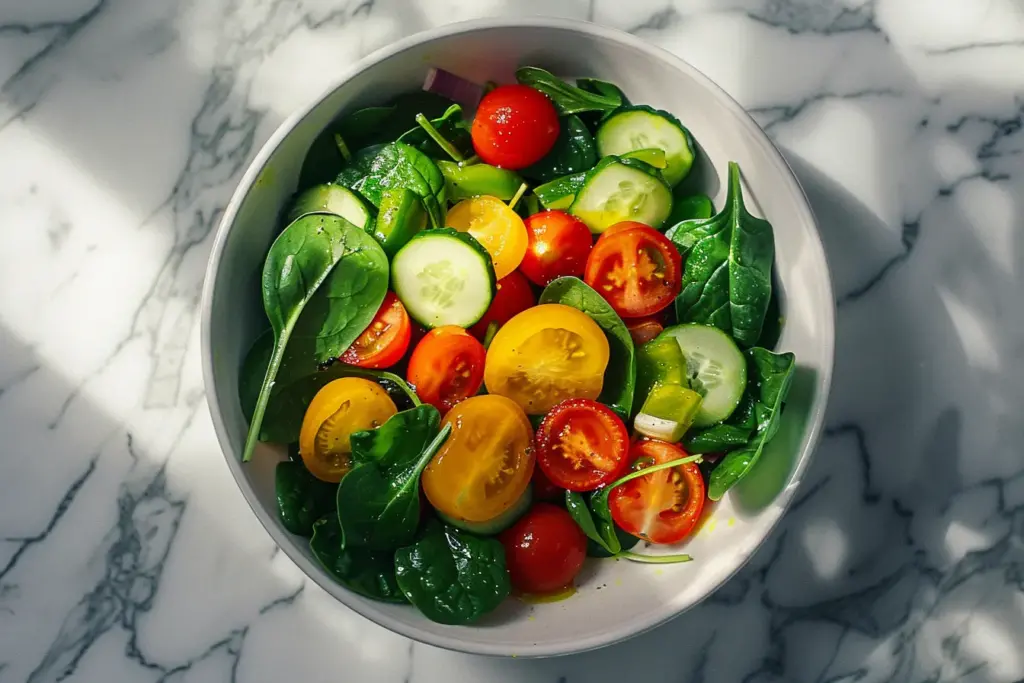
Maintaining Long-term Clean Eating Habits
Sustaining clean eating habits over the long term can lead to lasting health benefits and a balanced lifestyle. For those seeking to understand how to eat clean for beginners, here are strategies to help maintain these habits effectively:
- Set Realistic Goals: Define achievable, specific goals to guide your clean eating journey. Whether reducing sugar intake, eating whole foods, or cooking at home more frequently, setting clear goals helps provide direction and motivation.
- Create a Routine: Establishing a meal planning, preparation, and eating routine can make clean eating more manageable. Set aside weekly time for meal planning and grocery shopping, and maintain regular meal times to build consistency.
- Mindful Eating: Practice mindful eating techniques to foster a healthier relationship with food. Focus on each bite’s flavors, textures, and enjoyment, and eat slowly to savor your meals. This approach helps you tune into hunger and fullness cues, preventing overeating.
- Explore New Recipes: To prevent monotony, continually explore new clean-eating recipes and ingredients. Try international cuisines, seasonal produce, and different cooking methods to keep meals interesting and varied.
- Social Support: Surround yourself with supportive individuals who encourage clean eating habits. Share recipes, cook together, or dine at restaurants with healthy options. Having a support network helps reinforce your commitment and makes the journey more enjoyable.
- Track Progress: Monitor your progress by keeping a food diary, noting what you eat, how you feel, and any changes in health or mood. Tracking progress can highlight areas for improvement and keep you motivated on your clean eating journey.
- Reward Yourself: Acknowledge and celebrate your achievements, whether sticking to your clean eating goals for a month or trying a new recipe. Reward yourself with non-food-related activities like a day out, a new book, or a wellness class.
- Ongoing Education: Continue learning about clean eating, nutrition, and healthy habits. Stay updated on new foods, trends, and research, and apply this knowledge to refine your clean eating lifestyle. This ongoing education helps sustain your habits and promotes a healthy lifestyle.
Maintaining long-term clean eating habits involves setting goals, creating routines, and exploring new recipes. With the support of a healthy environment, ongoing education, and mindful eating practices, you can sustain your clean eating journey, ensuring long-term wellness and balance.

